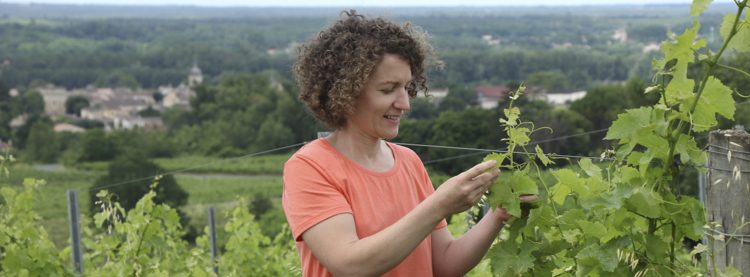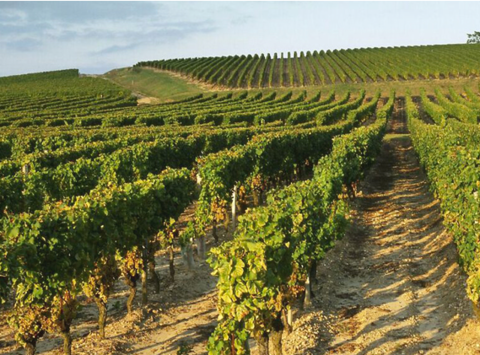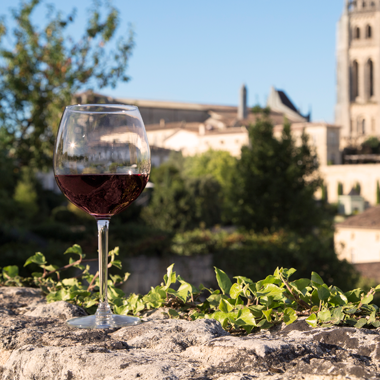John Brunton’s Bordeaux new generation wine trail
While many winemaking families of the prestigious châteaux of Bordeaux can claim a history stretching back centuries, travelling around today, wine lovers are increasingly likely to come upon one of the new generation of vignerons who have chosen to start a new adventure in the vineyards of Bordeaux. Sometimes this is the latest in the family line who after trying an alternative career cannot resist the allure of their vineyard home, others who convert midlife, abandon successful jobs and open a new page as a debutant winemaker, full of enthusiasm. And an influential proportion are women, eager to make their mark on the Bordeaux wine scene.
These are contemporary vignerons, without all the weight of history and tradition, who are embracing new ideas when making and then marketing their wines, ready to produce wines that are not just organic but biodynamic or zero sulphite, who look beyond the classic cellar of oak barrels and stainless steel vats, to innovative new vinification and ageing methods using terracotta or ceramic amphorae, even returning to retro cement cisterns but no longer coated with epoxy. The results mean there is a new generation of wines to discover, and here are ten of these top new winemakers to track down.
Domaine Les Carmels
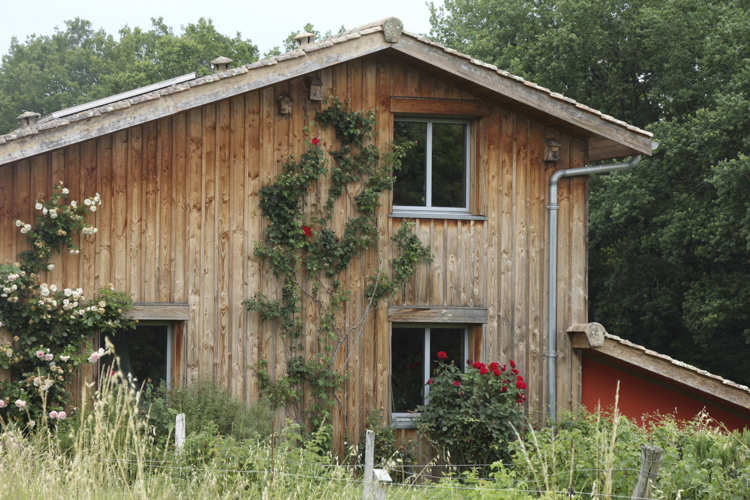
A long winding drive through forests, pastures and parcels of vineyards ends at a path lined with cypress trees, climbing to a plateau marked by a modern wooden cellar and rustic chalet. This is the hidden kingdom of Sophie and Yorick, idealistic young vignerons who realised a dream of creating their own Domaine in 2010, the same year of the first vintage of the new Cadillac Côtes de Bordeaux appellation. The couple manage full time jobs alongside running the winery, meaning they can afford to keep to their principles and not compromise. ‘We were so proud in that first year to make 2,500 bottles,’ recounts Sophie nostalgically. ‘Today it has risen to 20,000 bottles, though 60% of the harvest is sold to our supportive Cave Coopérative. We prefer selling grapes to them rather than putting all our effort into making a wine that just gets pumped into a lorry and taken off to a négociant.’
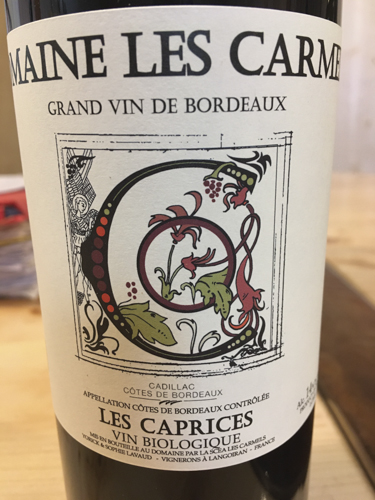
They make just two wines, Les Vendanges, an elegant blend of Merlot and Cabernet Franc, and Les Caprices, a distinctive zero sulphite pure Merlot, made to be drunk straight away. Sophie emphasises that, ‘I have a message to young winemakers who want to start out on their own. Have a good look around here because while properties in the famous appellations may cost millions, some parts of the Bordelais are among the lowest cost vineyards in France. In 2010, our 15 hectares cost us the grand sum of €140,000. There were 5 hectares of vines, but biodiversity was vital for us, so there are also 5 hectares of meadows, where we will grow cereals, and 5 hectares of forest, because people still don’t understand that monoculture just weakens your soil in the long term.’
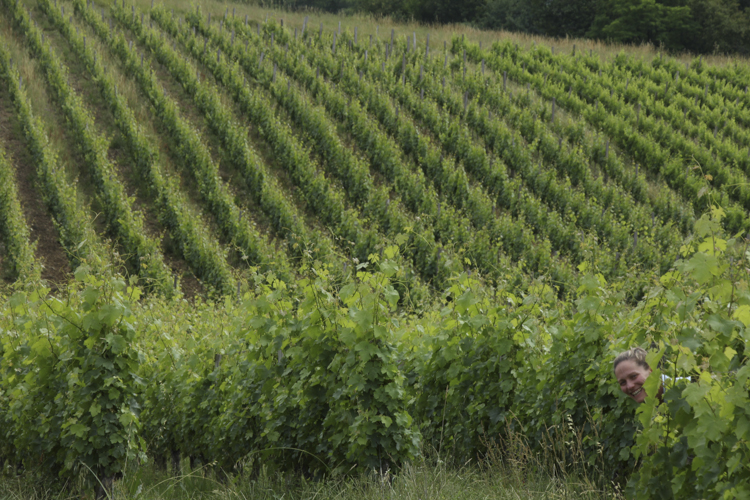
On the topic of organic cultivation, she just smiles, saying, ‘ we have been certified since the beginning, because organic is our way of life.’
Château La Peyre
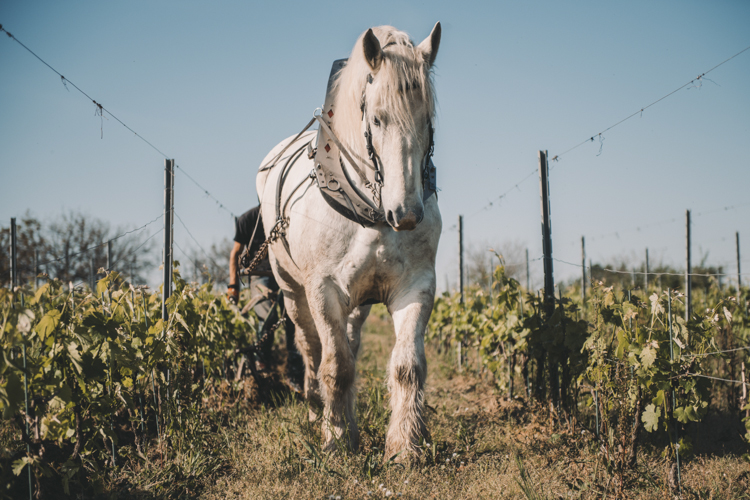
Don’t expect to see a grand Entre-deux-Mers château when visiting artisan winemaker, Fabien Lapeyre. With a little luck, your GPS will track down his hangar-like garage cellar, piled high with barrels, samples, test tubes, vats and boxes. Only downstairs is there some order where half a dozen terracotta amphorae stand like a clump of mushrooms shooting up after the rain. He was one of the first Bordeaux vignerons to use amphorae, back in 2015, creating an outstanding cuvée offering roundness and less astringent tannins for a blend of Cabernet Sauvignon, Petit Verdot and Malbec. And now states mischievously that, ‘I think my next step may be to move away from metal vats and bring back cement cisterns, because wine is a bit like people and I personally would rather sleep in cement than stainless steel’. In-between opening his numerous different wines, Fabien has strong opinions, stating that ’I sometimes think that in Bordeaux we have lost the soul of being a real vigneron – getting your hands dirty, tramping through the vineyards in muddy boots. We also have forgotten the personality and characteristics of the terroir. Instead of always wanting to increase the size of the vineyard I am looking to reduce it, pulling up vines to plant maybe wheat, barley, tobacco to combat monoculture and increase biodiversity.’ While Fabien’s parents still help him out on the estate, he has instituted nothing less than a ‘terroirist’ revolution here; certified organic next year, provocatively planting a hectare of Syrah, using a horse to work the soil, launching a range of 6 single-variety wines, replanting Bordeaux’s historic Carménère, and insisting that, ‘our traditional grapes that have disappeared, like Castets and Saint-Macaire, should be replanted as they could flourish due to Global Warming, a much better option rather than bringing in varieties or hybrids from other regions or even other countries.’
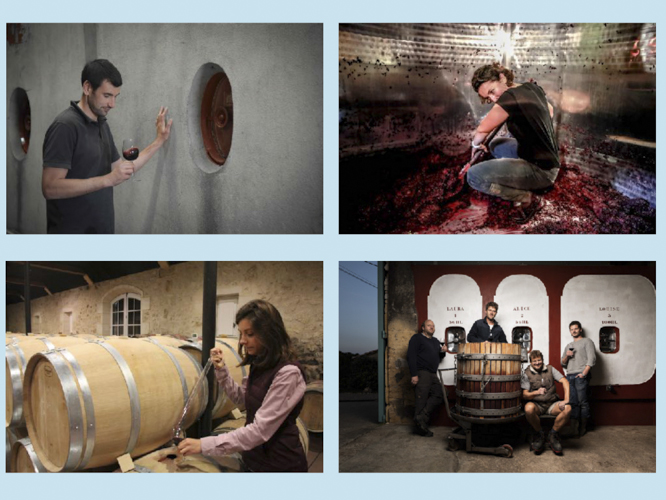
Clos Fontaine
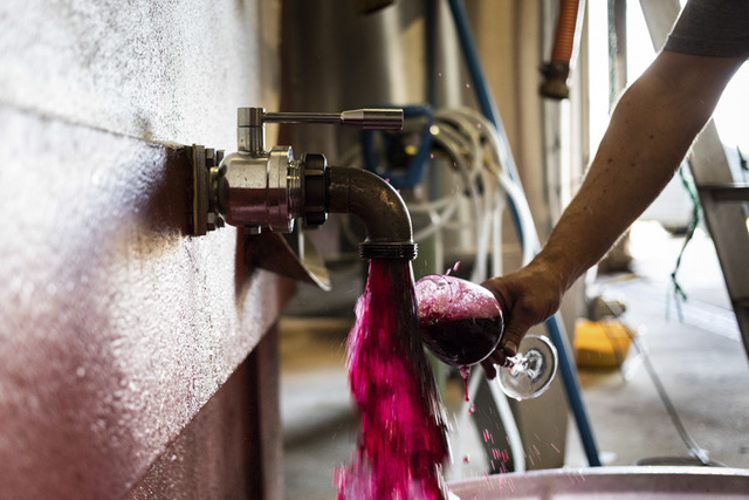
Although the Thienpont family’s history goes back to the 1920’s, when the founder of the dynasty arrived in Bordeaux from Flanders to become one of the region’s most important wine merchants, the present generation, Jan and Florian only returned to manage the family estates in 2013.
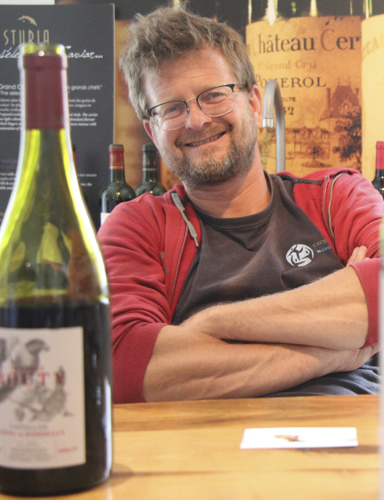
Opening bottles in their cluttered tasting room, Jan is rightly proud of the excellent wines they are producing, smiling as he explains how, ‘neither of us studied oenology but we grew up around the vineyard and all our boyhood friends are vignerons so we don’t lack advice! Moreover, we only produce reds and they are much easier to make than whites! I ran a transport business in Africa, Florian was a chef and food consultant, but knew we would come back one day to take over.’ They took quick, decisive action to create today’s estate, ‘because economically speaking, we could not survive with Clos Fontaine’s 20 hectares in the Francs Côtes de Bordeaux appellation, so we purchased Château Bouty and Château Robin, both in the neighbouring Castillon Côtes de Bordeaux appellation, with each château characterised by very different soils.’ And it is terroir that best describes their distinctive artisan wines. ‘We are the furthest appellations from Bordeaux, so our wines are more continental than oceanic.’ It is the variety of their wines that really surprises, some aged in stainless steel vats, others in raw concrete cisterns, classic Bordeaux blends contrasting with a 100% Merlot. ‘If I am meant to represent the new generation,’ says Jan pensively, ‘then I reckon I am probably worse than most of the older generation as I don’t have a website and don’t even think about the likes of Instagram. All our energy goes into producing the wine.’
Château Haut-Rian
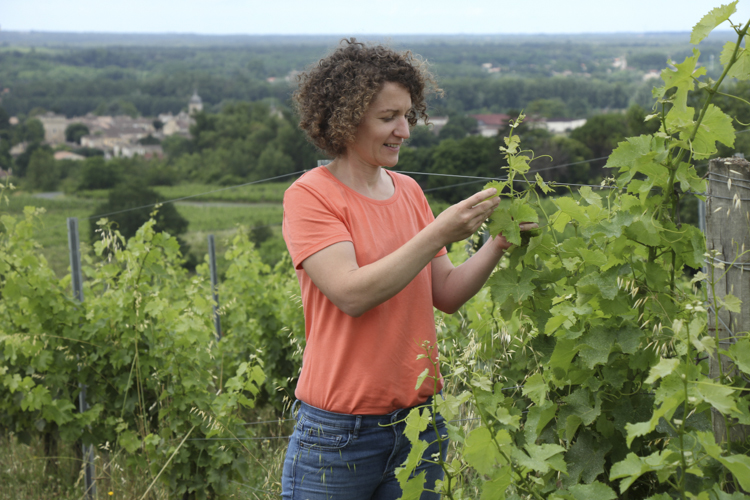
Situated just outside the beautiful medieval village of Rions, this 80-hectare vineyard stretches across the rolling hills of the picturesque Cadillac appellation and was created just 30 years ago by a couple who chose to move away from their respective winemaking families in Alsace and Champagne, to settle in Bordeaux. Today, Michel and Isabelle Dietrich have handed the estate over to their bouncy, curly-haired daughter, Pauline. She chose to study oenology in Montpellier because of its unconventional view of wine, ‘and although I am very proud to continue the work of my parents, I know which direction I want to take. While committed to the region’s historic grape variety, Sémillon, crucial for the blend of our Bordeaux Blanc, we are also experimenting with monocépage and zero sulphite cuvées, while my husband and I have bought a small 7-hectare vineyard, Les Vignes de Coulous, that is already certified organic. It is a learning process to transform all of Château Haut-Rian’s vineyard. So if all goes plan, the Château will become certified organic, and then we continue the experiment by turning Coulous biodynamic.’
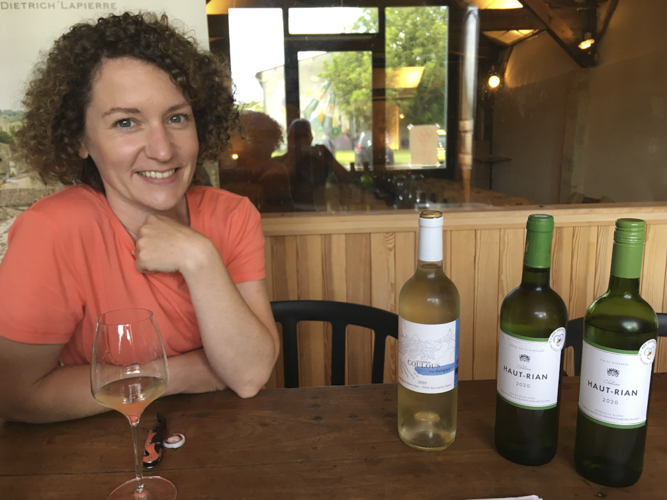
She has also moved away from selling their wine in bulk, insisting that, ‘you have to learn how to sell your wine direct if you want to survive today. When I took over, I went straight to Paris to visit wine sellers, arriving on my bike with the basket filled with Petit Verdot vine plants as presents.’ Pauline has created a young, dynamic team, people who have often converted from other professions, passionate not just about wine but nature, the environment and biodiversity. ‘I am convinced that wine should be like bread, reasonably priced so everyone can enjoy it without fear of opening an expensive bottle, thinking they should hide it away in the cellar. That is not our spirit.’
Château La Grande Clotte
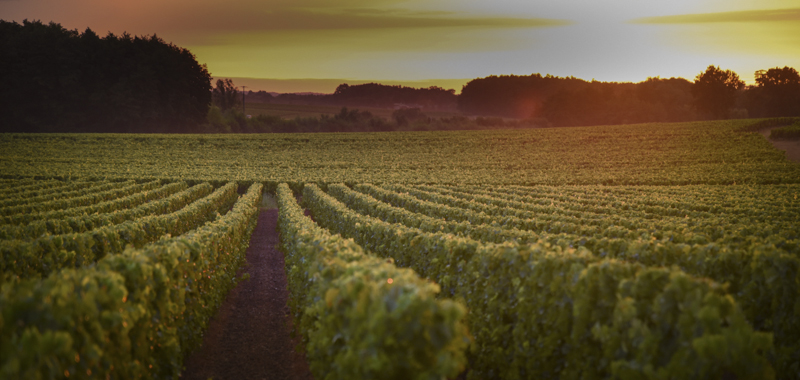
Lussac-Saint-Emilion adjoins some of the world’s most famous châteaux – Petrus, Cheval Blanc, Angelus – so not the obvious place to buy your own first vineyard. But Julie and Mathieu Mercier are a very determined couple. Both oenologists graduating from Bordeaux immediately set off travelling to make wine in Chile and Napa Valley before running a high profile winery in British Colombia’s Okanaga Valley. ‘They just gave us the keys of this 32-hectare estate, ‘ recalls Julie, ‘and let us get on with it. It was a terrifying but amazing experience, giving us the courage to come back to France to buy our own domain. This is a wonderful vineyard and château, and we received crucial financial aid from the government to encourage young people in agriculture.
When we drove up and saw the sun set over the vines, well it had to be for us, perfect to make wine, perfect for our wine tourism projects.’ Today, they are converting to organic, with Mathieu overseeing the cellar while Julie prefers the vineyard where she gets to drive the tractor. They have two charming guestrooms, a chic tasting room, and blending ateliers where you go away having created your own wine. While their flagship wines are classic Bordeaux blends, Julie stresses that,’ in today’s competitive world, a vigneron cannot just go into a wine boutique and say here is my Lussac-Saint-Emilion. Frankly, they are not excited.
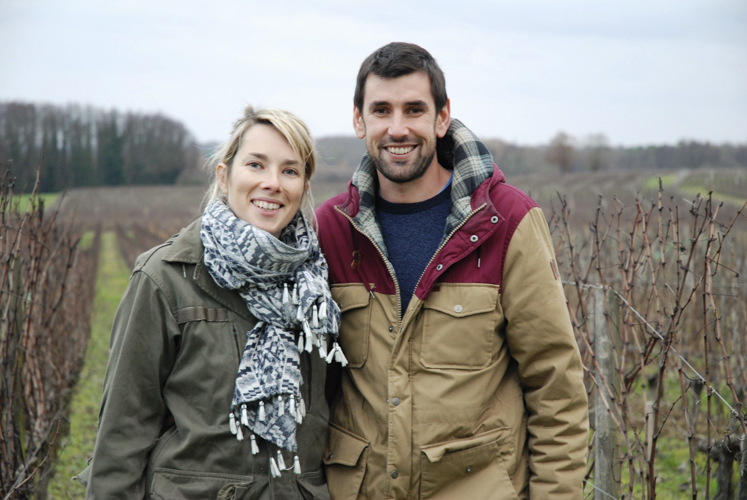
People no longer buy an appellation they buy the story of the winemakers, so we create original wines to catch attention; from our tannic L’Envolée, made to age from 80 year-old vines to L’Essentiel, a fruity, easy to drink Merlot and Malbec blend. I even pop it into the fridge for 10 minutes which is heresy here in Lussac.’
By John Brunton
